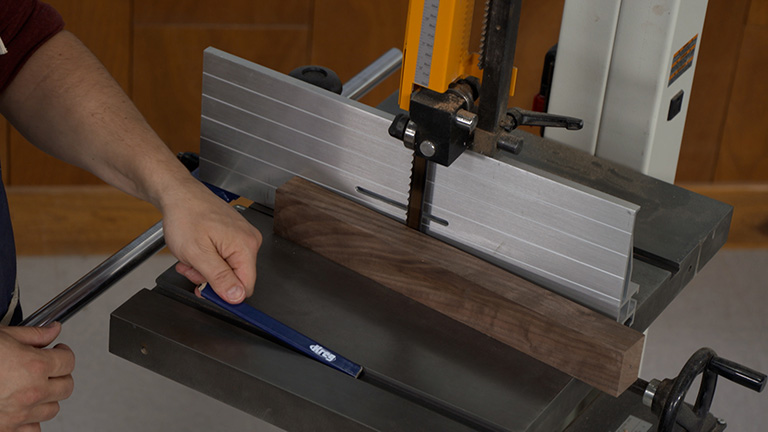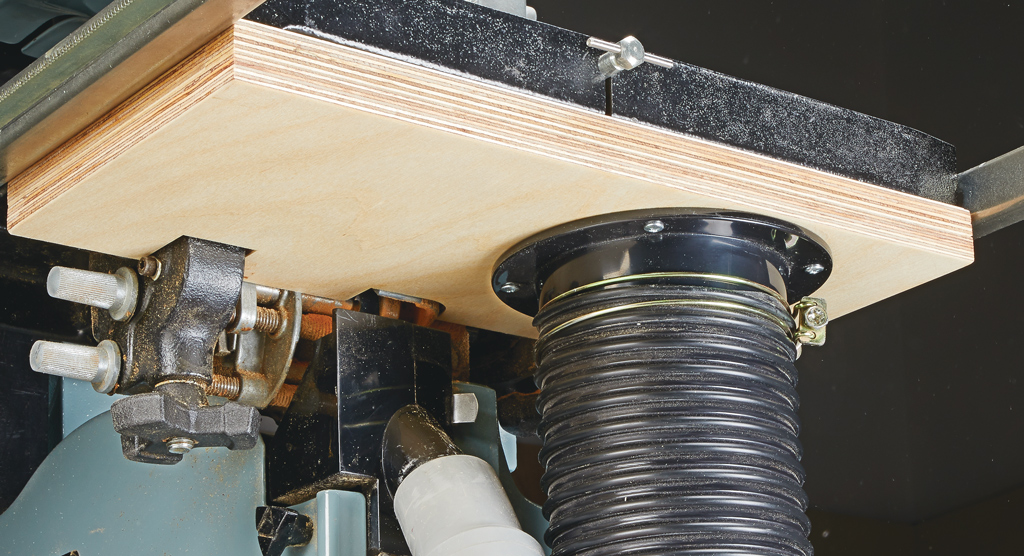Download a free article to learn more about getting lumber from logs from WoodsmithPlans.com here.
A chance for free lumber is hard to pass up for most woodworkers. As a result, I’ve often been tempted by the possibility of using unique-looking pieces of firewood. Even logs and branches from trees cut down in the neighborhood catch my eye. These are often from species you won’t commonly find in a lumberyard. Small pieces of wood like this can be used for making everything from turning blanks and tool handles to small cabinets and boxes.
The challenge is turning a log into usable boards. But if you have a band saw, you’re halfway there. Think of it as a miniature sawmill. However, there are a few things to consider.

Know Your Limits. For starters, keep the cutting capacity of your saw in mind as you look for wood. It doesn’t do any good to pick up a log or branch if you can’t cut it with your band saw. For example, most 14" band saws can cut pieces up to 6" thick.
Have Patience. Another consideration is that freshly cut logs and branches are pretty wet. So don’t expect to use the boards you cut right away. This also means you need a place to stack the boards while they dry.
Take Care. The final consideration is safety. Be on the lookout for embedded metal objects like nails and staples. A hand-held metal detector can locate items lurking below the surface.
Setup. It won’t take much work to prepare your band saw to turn logs into lumber. But I do want to mention something about the blade. Normally, I recommend using a high-quality blade for top-notch results. But in this case, an inexpensive blade is a better choice. Bark, grit, and metal are hard on blades. So you don’t want to ruin a good blade.
In addition, the blade should be as wide as your band saw will allow and have 2-3 teeth per inch. This way, the blade will cut straight without bogging down.

Simple Sled. Before you cancsaw the log into boards you need to create a flat surface to ride on the saw table. For that, I turn to a plywood sled (see drawing above).

By attaching the log to the sled with screws, you can prevent it from rolling as you cut two faces flat and square. Make sure the log slightly overhangs the edge of the sled for the first cut. I also use an old chisel to remove some of the bark so the log isn’t wobbly.

Reference Cuts. At this point, you’re ready to make the first cut. Feed the log steadily through the blade to keep the blade on track.

Once you complete this initial cut, you’ll use the sled to create a second surface square to the first. This allows you to slice boards from the log using just the band saw’s rip fence. So remove the log from the sled, rotate the flat side down, and secure it again with screws.
Making Boards. After cutting the reference faces, you can start making boards. How you plan to use the wood will determine how thick to cut the boards. Keep in mind that the wet, rough-cut boards may warp and shrink. So don’t cut the pieces to the final thickness. Instead, I like to leave some extra material to allow for jointing and planing the wood smooth and flat once it’s dry. Adding about a 1⁄4" is a good rule of thumb.
Cutting the boards from the log is really the same as resawing, as you can see in the main photo. And you’ll have a pile of boards in a short time. However, your work isn’t quite done. Freshly cut lumber needs to be stored and dried properly to end up as stable boards.
Patience is the name of the game when it comes to drying lumber cut from a log. But that doesn’t mean you can just place them in a bin. You want to make sure the boards have good air circulation for drying and to prevent the growth of woodrotting mold. And you want to keep the wood flat.

The way to do this is to stack the boards on a couple pieces of “two-by” stock to keep them off the floor. And add thin strips of wood (called stickers) between each board to allow air to circulate and water vapor to escape. Arrange the stickers so they’re aligned vertically over the two-by stock. This helps the boards stay straight. How long you need to wait depends on the thickness of the boards. A good rule of thumb is to allow one year for each inch of thickness in the board.
Now it’s just a matter of waiting. When the time is right, you’ll have unique lumber ready to turn into a great-looking project.











